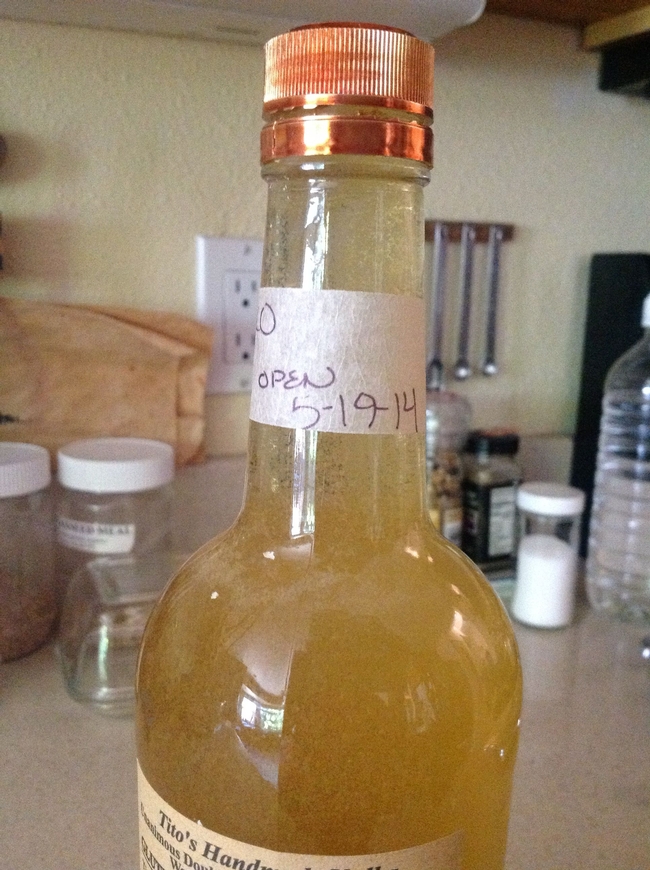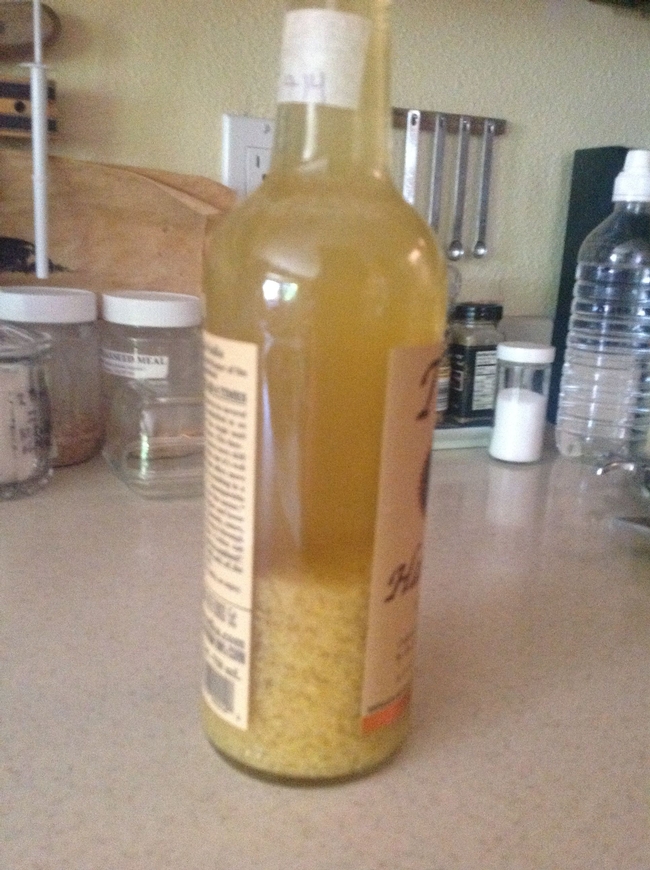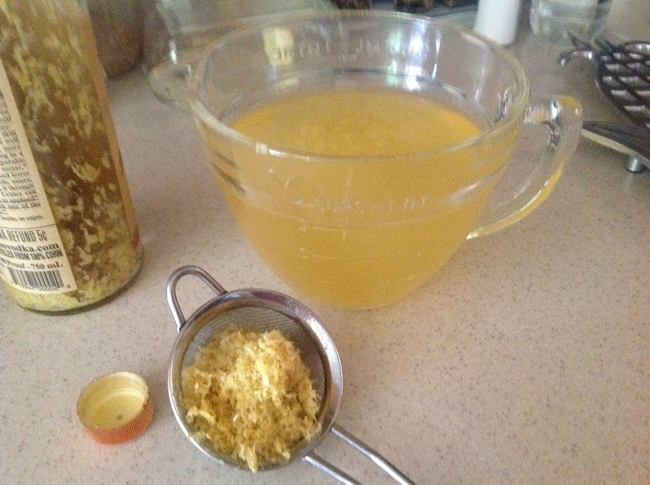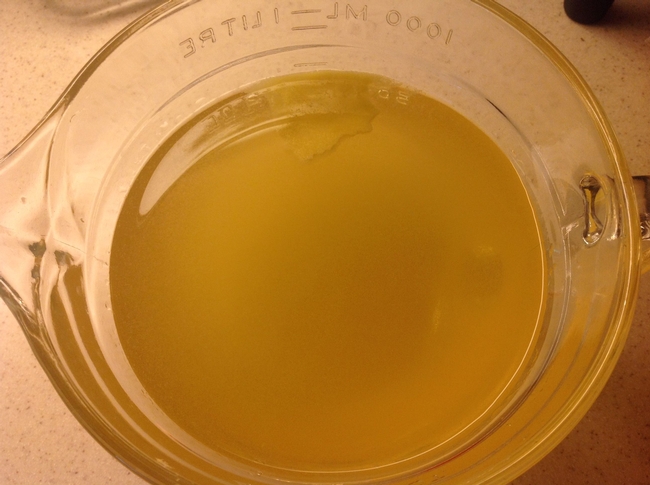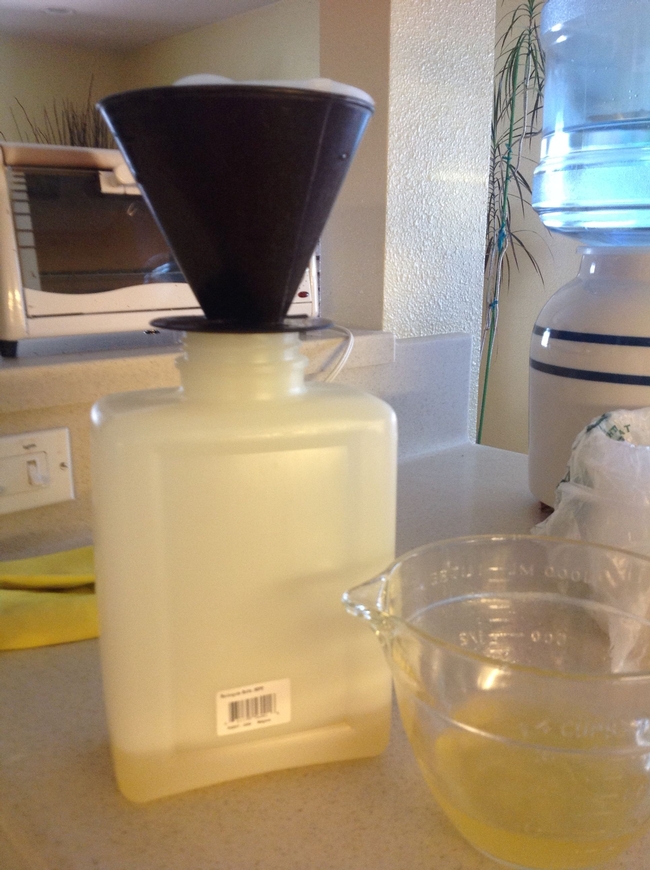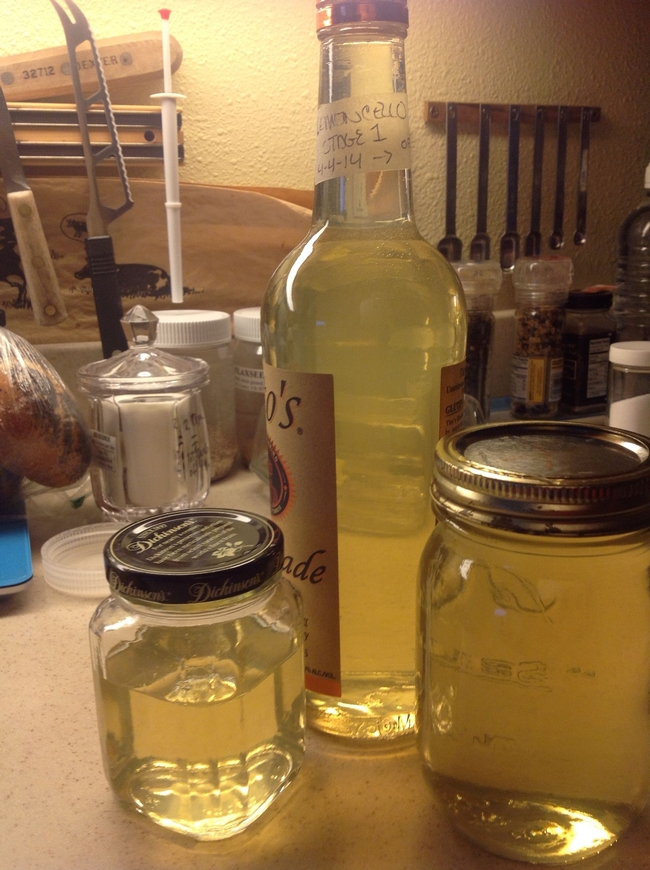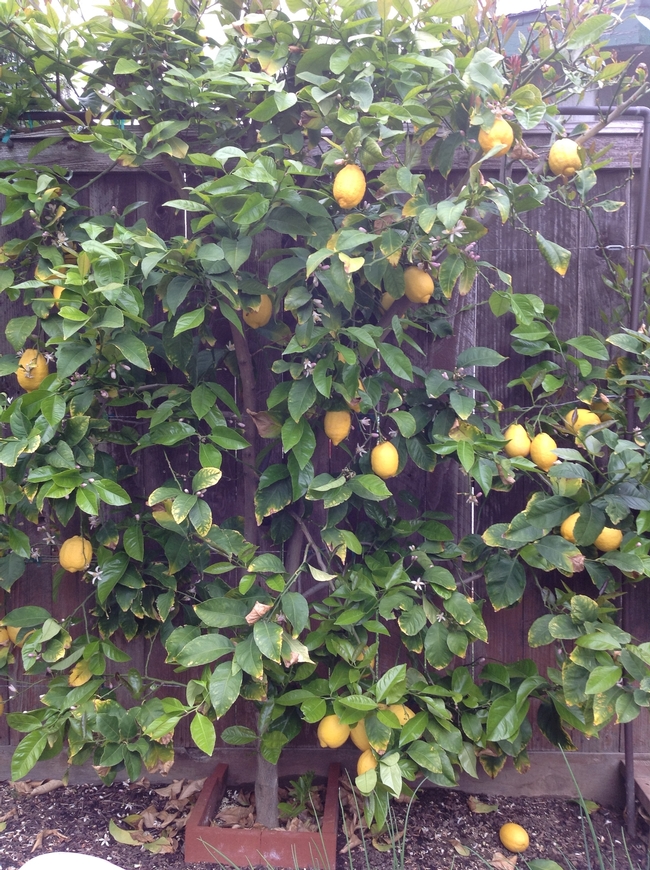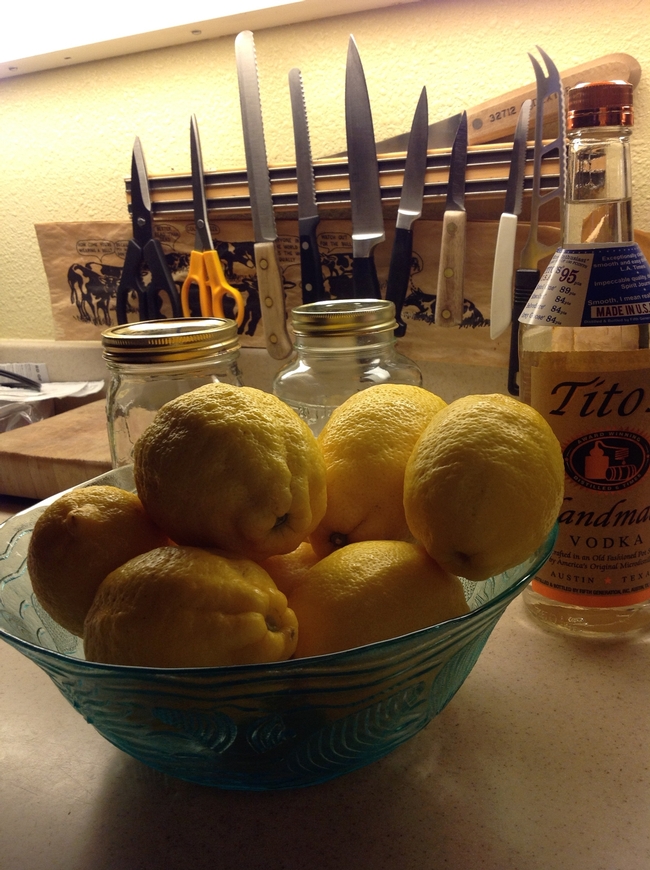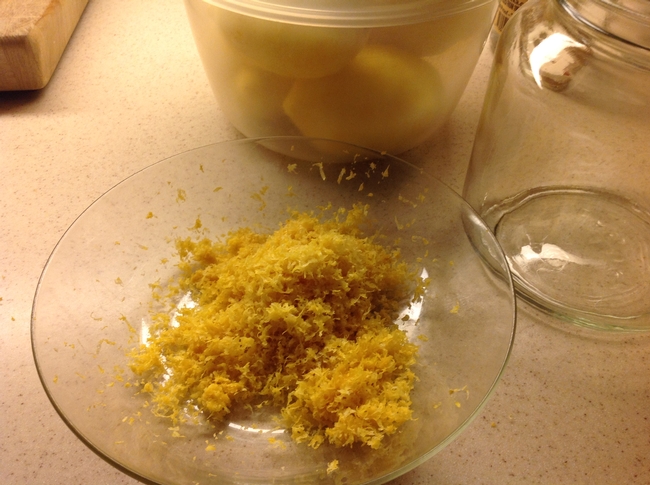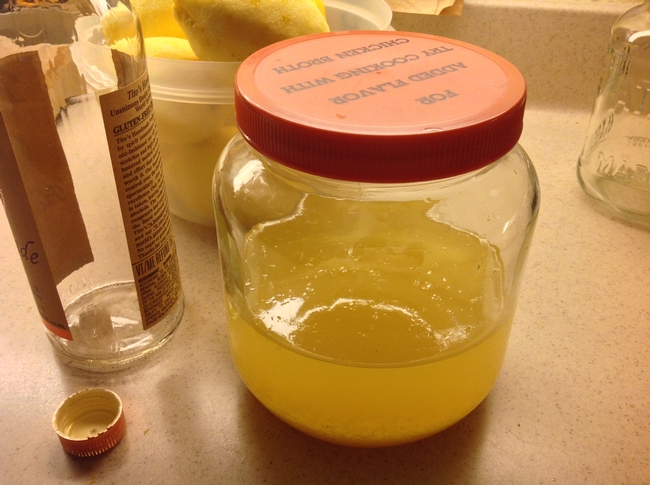Posts Tagged: lemons
About that lemoncello
One of the hazards of contributing to a shared blog, is that one forgets to post. So in this case, while I said in my last post that we would re-visit the lemoncello in mid-May, here it is September. Time flies.
The lemoncello is a huge success, we've been enjoying it on the hot summer afternoons that are plentiful in Davis. And here's how I got from pith to pleasure . . . .
The first steps in the lemoncello process were documented in this early Spring post. The recipe calls for 6 weeks of steeping the lemon zest in the alcohol in a cool, dark place; preferably, in a place where it won't be disturbed. I had placed mine in a place so cool, dark, and undisturbed it took me 45 minutes to find it.
But that resolved, I moved to the next step - filtering.
You can see that the zest from all of those lemons has settled to the bottom of the bottle. Lemoncello aficionados recommend a 2-step filtering process. The first step is to get most of the zest out using a fine sieve.
Look at all of this zest!
Quite a bit of solid material is left in the liquid after this process.
To remove these last solids, the liquid is filtered through a paper coffee filter. (Lemoncello purists, like coffee purists, would object to the use of a paper filter, saying it imparts a paper flavor.)
The next step is to add the cooled simple syrup. The basic simple syrup recipe calls for equal parts of sugar and water, but for lemoncello less sugar is used. For one 750ml bottle of base alcohol, you need 2-1/2 cups of water and 1-3/4 cups sugar. Add the sugar to the water in a medium saucepan and heat over medium heat. Bring to a gentle boil, stirring constantly, until the sugar is dissolved. Let the mixture cool completely to room temperature before adding to the lemoncello base.
Decant the mixture, and put in a cool, dark place for another 45 days. The addition of the simple syrup increases the volume, so you can't fit your mixture into the original bottle.
This mixture was moved into two tall glass bottles and set aside until early July.
You can put the finished lemoncello in the freezer or in the refrigerator. Enjoy it alone or in a cocktail on a hot summer afternoon when you need a little something refreshing!
If you want to make your own lemoncello, an excellent resource is the blog LemoncelloQuest.
Lemons are the zucchini of winter - take 2
It's early spring, and that means one thing: I am once again drowning in lemons. This year with our tree well established, we had a bumper crop. Even as an espalier, our tree produces more lemons than we can use. And as anyone with a lemon tree knows - it's almost impossible to give away lemons. Lemons are the zucchini of winter.
With a pantry full of marmalade, a batch of salted lemons preserving, and all of the copper gleaming, I was looking for a new way to use my harvest. A neighbor told me she distributed all of her lemons by having a lemoncello making contest with her friends. Lemoncello, the Italian lemon liqueur, is gaining popularity outside of Italy. It uses a lot of lemons and is easy to make.
The basic recipe for lemoncello is the same. Lemon zest, alcohol, simple syrup, and time. While recipes vary little, proportion and procedures are highly guarded secrets of the cognosenti.
Purists insist on using a base of grain alcohol; it imparts no flavor of its own to the lemoncello letting the lemons shine through. Where grain alcohol is unavailable, a high quality vodka can stand in. I chose a hand crafted corn based vodka, distilled 6 times, because corn seemed the closest to grain alcohol and it had a relatively high proof.
For my first try, I am halving the basic recipe. The first step was to zest the lemons. A lot of lemons.
A microplane is a must-have tool as you want pure zest with no pith.
Add the liquor to the lemon zest. Put it a cool, dark place. Wait. 45 days.
See you mid-May for the next step.
P.S. After the original mixing of the lemon zest and the vodka, and on an apéritif roll, we decided to make vin de pêche using the recipe from Chez Panisse Fruit. The large glass jar photographed above was re-purposed for the vin de pêche, and the vodka and the zest were moved into the empty vodka bottle. This is probably a better solution as there is less air surface in the container.


